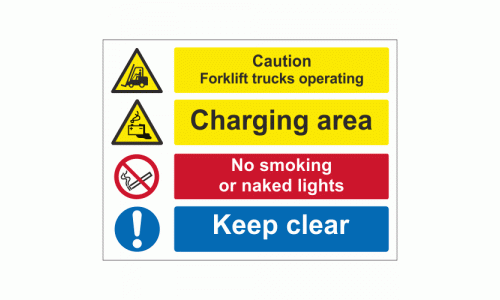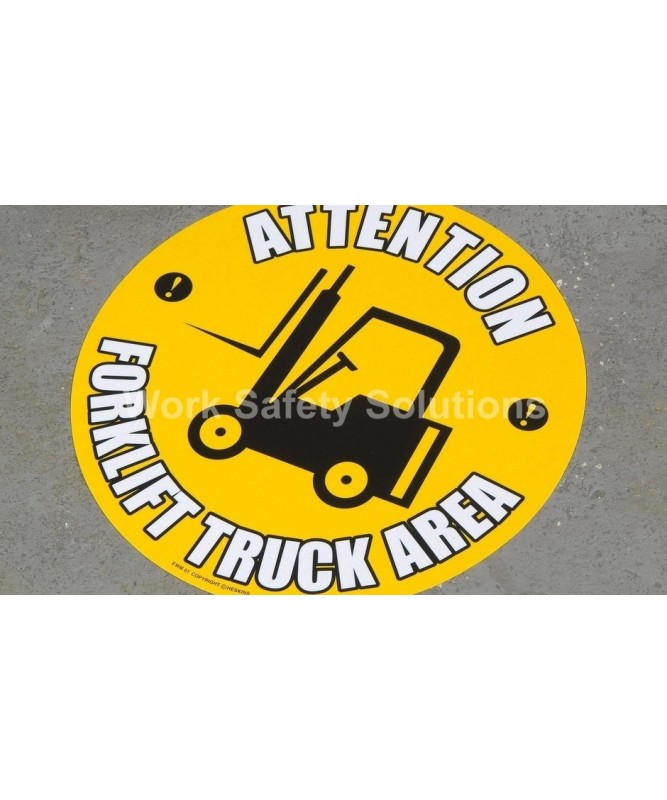Forklift Signs-- Budget-friendly Safety Solutions for Industrial Workplaces
Forklift Signs-- Budget-friendly Safety Solutions for Industrial Workplaces
Blog Article
Trick Factors To Consider for Designing Effective Forklift Safety Indications
When making reliable forklift security indicators, it is critical to take into consideration a number of essential elements that jointly ensure optimum presence and clearness. Strategic placement at eye degree and the usage of long lasting materials like aluminum or polycarbonate more add to the longevity and efficiency of these indications.
Color and Comparison
While making forklift security signs, the choice of color and comparison is critical to guaranteeing visibility and performance. Shades are not just aesthetic components; they offer essential useful functions by communicating certain messages rapidly and minimizing the threat of accidents. The Occupational Safety And Security and Wellness Management (OSHA) and the American National Specification Institute (ANSI) provide standards for using shades in security indications to systematize their significances. Red is typically utilized to represent immediate danger, while yellow signifies caution.
Efficient comparison in between the background and the text or icons on the indication is similarly vital. High comparison ensures that the sign is understandable from a distance and in differing lighting conditions. Black message on a yellow history or white text on a red history are mixes that stand out plainly. In addition, using reflective materials can enhance visibility in low-light settings, which is often a consideration in storage facility settings where forklifts operate.
Making use of proper shade and comparison not only sticks to regulatory criteria however also plays an essential role in preserving a secure functioning atmosphere by making sure clear communication of hazards and guidelines.

Font Style Size and Design
When designing forklift safety and security signs, the selection of font style dimension and style is important for guaranteeing that the messages are understandable and rapidly recognized. The primary goal is to boost readability, especially in atmospheres where fast information handling is essential. The font style dimension need to be large sufficient to be reviewed from a distance, fitting differing view conditions and guaranteeing that employees can comprehend the indication without unneeded pressure.
A sans-serif font is normally advised for safety indications as a result of its tidy and simple look, which boosts readability. Fonts such as Arial, Helvetica, or Verdana are frequently liked as they do not have the elaborate details that can cover important info. Consistency in font design throughout all safety signs aids in creating an uniform and expert appearance, which additionally strengthens the relevance of the messages being conveyed.
Additionally, focus can be accomplished through strategic use of bolding and capitalization. By thoroughly selecting appropriate typeface sizes and designs, forklift safety and security indications can effectively interact essential safety details to all workers.
Positioning and Visibility
Guaranteeing optimum placement and visibility of forklift safety and security signs is paramount in industrial settings. Correct indication placement can dramatically minimize the risk of crashes and improve general office security. Firstly, indications should be positioned at eye degree to ensure they are easily obvious by operators and pedestrians. This normally means putting them in between 4 and 6 feet from the ground, depending on the typical elevation of the workforce.

Lighting problems likewise play an important duty in visibility. Signs need to be well-lit or made from reflective products in dimly lit locations to guarantee they show up at all times. The usage of contrasting shades can further enhance readability, specifically in settings with differing light problems. By carefully considering these aspects, one can ensure that forklift security indicators are both efficient and noticeable, thus promoting a more secure working atmosphere.
Product and Resilience
Choosing the right materials for forklift security indications is important to ensuring their longevity and performance in commercial environments. Offered the extreme conditions typically experienced in storehouses and producing facilities, the materials chosen must endure a variety of stress factors, consisting of temperature variations, dampness, chemical exposure, and physical effects. Sturdy substratums such as light weight aluminum, high-density polyethylene (HDPE), and polycarbonate are popular selections because of their resistance to these components.
Aluminum is renowned for its robustness and rust resistance, making it an excellent selection for both indoor and outside applications. HDPE, on the other hand, supplies phenomenal impact resistance and can withstand extended direct exposure to harsh chemicals without breaking down. Polycarbonate, understood for its high effect stamina and clarity, is often utilized where visibility and longevity are vital.
Equally vital is the kind of printing made use of on the signs. UV-resistant inks and safety finishes can considerably enhance the life expectancy of the signs by avoiding fading and wear triggered by prolonged direct exposure to sunshine and various other environmental factors. Laminated or screen-printed surfaces supply extra layers of defense, making sure that the essential safety and security details stays understandable with time.
Investing in high-quality products and durable production processes not just extends the life of forklift safety indications yet likewise reinforces a society of safety and security within the office.
Conformity With Regulations
Sticking to governing requirements is paramount in the layout and release of forklift security signs. Conformity ensures that the indications are not only efficient in communicating important safety and security information but additionally meet lawful responsibilities, thus mitigating possible liabilities. Numerous organizations, such as the Occupational Security and Health And Wellness Administration (OSHA) in the USA, give clear standards on the specs of safety forklift signs and security signs, including color systems, text dimension, and the incorporation of generally recognized icons.
To follow these laws, it is important to perform a detailed review of applicable standards. OSHA mandates that safety indicators must be noticeable from a range and include particular colors: red for risk, yellow for care, and eco-friendly for safety and security instructions. Additionally, sticking to the American National Standards Institute (ANSI) Z535 series can even more boost the effectiveness of the signs by systematizing the style aspects.
Moreover, normal audits and updates of safety signs need to be performed to guarantee continuous compliance with any adjustments in guidelines. Involving with accredited security specialists during the layout stage can likewise be helpful in guaranteeing that all regulatory demands are fulfilled, and that the indicators offer their designated function efficiently.
Conclusion
Creating efficient forklift safety and security indications calls for careful interest to color comparison, font style dimension, and style to guarantee ideal exposure and readability. Adherence to OSHA and ANSI standards standardizes safety and security messages, and including reflective products increases presence in low-light circumstances.
Report this page